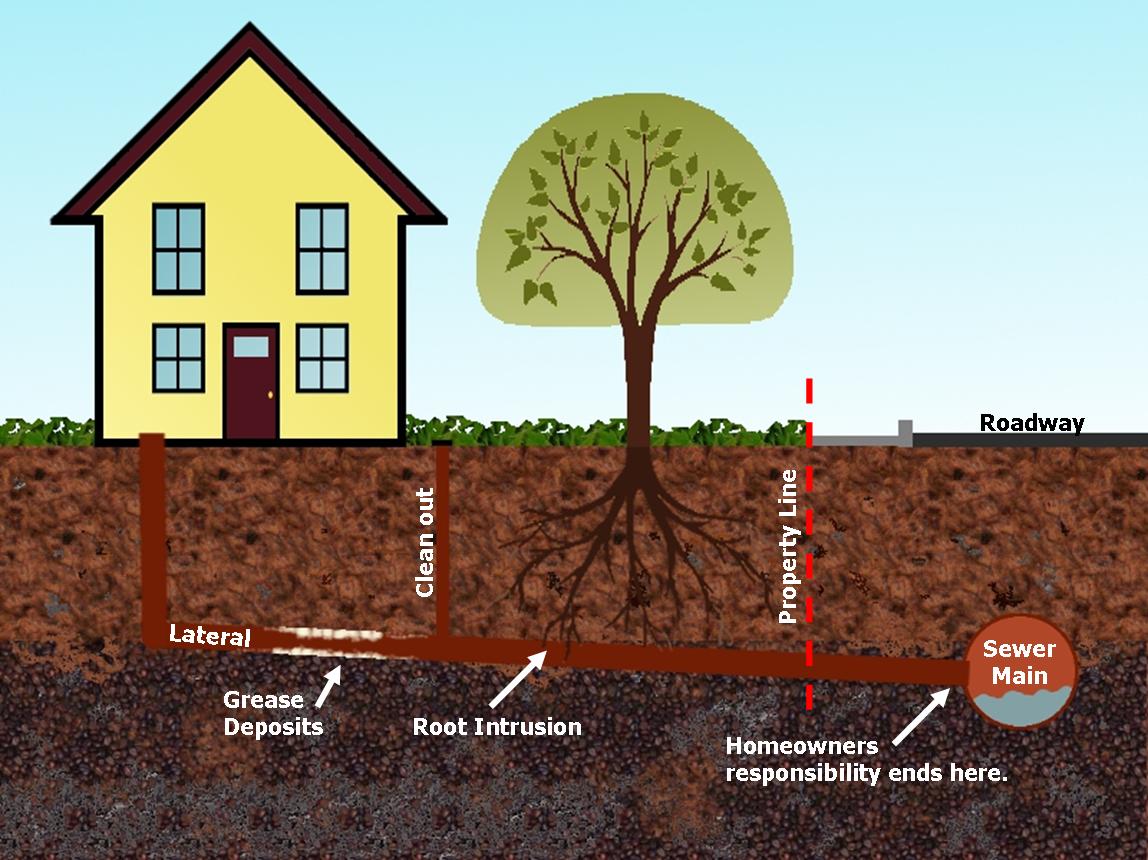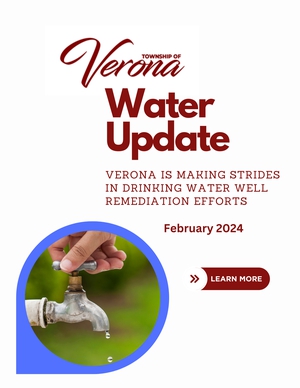Waste Water Treatment Plant Supervisor
Jeff Sonntag
Location: Public Works WWTP, 10 Commerce Court, Verona, NJ 07044
Phone: 973-857-4843
Water
- 2019 Water Quality Report
- 2018 Water Quality Report
- 2017 Water Quality Report
- 2016 Water Quality Report
- 2015 Water Quality Report
- 2014 Water Quality Report
- 2013 Water Quality Report
- 2012 Water Quality Report
- 2011 Water Quality Report
- 2010 Water Quality Report
- 2009 Water Quality Report
Sewer Information
Homeowner Responsibilities
Did you know that YOU, as a homeowner, have a responsibility for maintaining the sewer system?
All homes and businesses connected to sanitary sewer systems have a lateral. It's the pipe that transports water used inside your home out to your city's sanitary sewer system in the street (see image below). Sewer laterals are entirely owned by the private property owner they serve. The private property owner is responsible for maintaining the entire length of the lateral, which includes that portion that may be located within the public right of way (under the asphalt and street landscaping). Maintaining the lateral includes keeping the lateral line flowing and free of debris such as roots and grease.

Sewer Backups
Sewer backups can cause tremendous damage to the interior of a home. In order to minimize these, the Township provides continual maintenance services for the public sewer mainlines.
Unfortunately, however, sewer laterals are often not maintained by private property owners until a disaster strikes. "Out of sight, out of mind" is a typical approach to sewer lateral maintenance and operation by many.
To avoid costly repairs and to protect public health and the environment, property owners should have their sewer laterals cleaned regularly. Ideally, a lateral should be professionally cleaned once a year to remove built up debris. Inspections using a small camera should be conducted by a licensed professional every three to five years to ensure pipe integrity. Check more often if you experience a sewage-like odor or frequent clogged drains.
Access to the lateral pipe is important for cleaning, maintenance and troubleshooting. A cleanout is an access point into the sewer lateral that is used to inspect the line and clear it of any obstruction. Cleanouts are usually located within three to five feet of a business or home, or sometimes at the front property line near the street, and they look like the end of a pipe with a cap on it. A plumber can determine a cleanout’s location, its condition and make repairs. The cleanout cap must be on tight at all times except when servicing the lateral.

